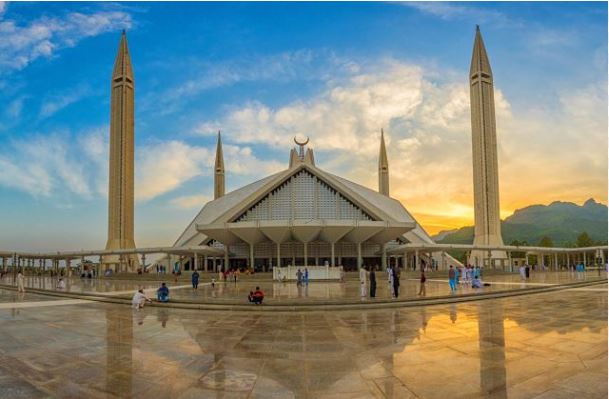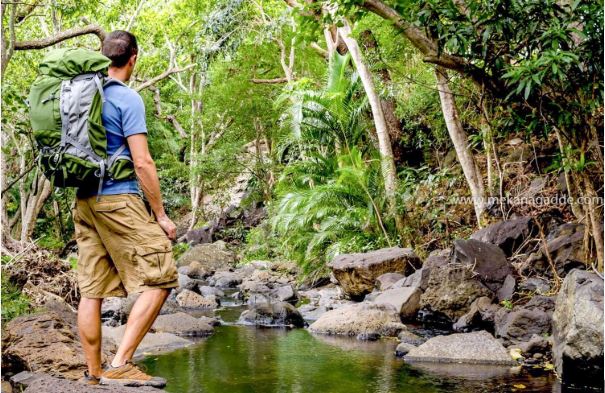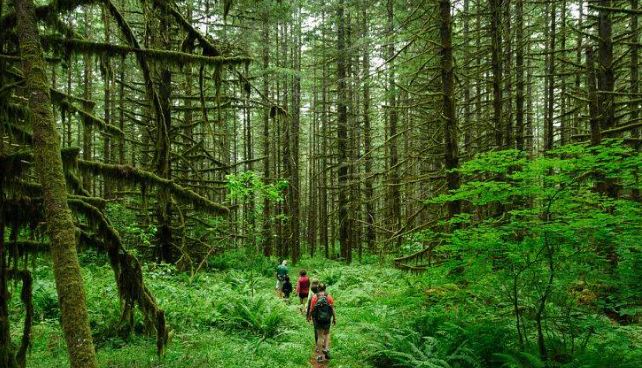Introduction
For mindful travelers, what is the difference between traditional tourism and ecotourism is more than just a question—it’s a decision that shapes the way we experience the world. As travel becomes more accessible and widespread, the impact of our choices on nature and local cultures has never been more important. This post explores the key differences between these two travel styles, highlights why ecotourism is gaining momentum in 2025, and shows how embracing eco-friendly travel—especially in a diverse country like Pakistan—can lead to more meaningful, responsible adventures.
Table of Contents
Understanding Traditional Tourism
Traditional tourism has been the cornerstone of the global travel industry for centuries. It involves individuals or groups traveling to different destinations primarily for leisure, relaxation, cultural exploration, and recreation. This form of tourism is what most people think of when they hear the word “vacation,” as it often revolves around popular tourist attractions, established hotels, and well-known activities.

While traditional tourism has its appeal and contributes significantly to local economies, it has been critiqued for its environmental impact and its effects on local communities. In this section, we’ll dive deeper into the characteristics of traditional tourism, its appeal to travelers, and the potential challenges it brings.
Characteristics of Traditional Tourism
Traditional tourism encompasses a wide range of activities, but it typically focuses on comfort, convenience, and mass-market experiences. Here are some of the defining characteristics of traditional tourism:
- Mass Tourism: One of the primary features of traditional tourism is the mass influx of visitors to popular tourist destinations. These places are designed to accommodate large groups of people, often creating busy, crowded environments. Think of destinations like Paris, Rome, or New York City, where millions of tourists flock each year to see iconic landmarks and experience well-established attractions.
- Mainstream Attractions and Activities: Traditional tourism usually centers on visiting well-known sites such as museums, amusement parks, beaches, or shopping districts. The focus is often on commercialized experiences, where the emphasis is on entertainment rather than engagement with local cultures or environments.
- Commercialized Services: From large hotel chains to standardized restaurant menus, traditional tourism often relies on services that cater to the masses. These services are designed for convenience and consistency, but they may lack the unique, authentic touch that you might find in more specialized, smaller-scale tourism operations.
- Transportation by Air, Car, or Bus: Traditional tourists typically travel long distances using common modes of transportation such as airplanes, trains, or large buses. This facilitates easy access to distant destinations but can contribute to high carbon emissions and environmental degradation, especially when air travel is involved.
- Pre-packaged Tours: Many traditional tourists prefer guided tours or pre-packaged vacation packages that offer set itineraries and activities. This allows them to experience a destination without having to plan the details themselves, but it can limit their exposure to authentic local culture and experiences.
Negative Impacts of Traditional Tourism
While traditional tourism offers many benefits, it also comes with some significant drawbacks that have raised concerns over time:
Rising Costs for Locals: In some tourist-heavy regions, the demand for goods and services driven by tourism can lead to inflated prices for locals. This can make it difficult for residents to afford basic necessities, further deepening the divide between tourists and local populations.
Environmental Degradation: The environmental cost of traditional tourism is significant. Mass tourism, especially in popular destinations, often leads to pollution, overconsumption of resources (like water and energy), and habitat destruction. Hotels, airports, and other tourism infrastructure can have a long-lasting impact on the natural landscape, especially if sustainable practices are not in place.
Over-Tourism: Over-tourism occurs when a destination experiences too many visitors at once, causing crowding, depletion of resources, and a diminished quality of life for local residents. This can lead to overcrowded public spaces, long lines at attractions, and an overall decline in the quality of the travel experience for everyone involved.
Cultural Erosion: Popular tourist destinations often cater to the tastes and expectations of visitors, which can lead to the commercialization of local culture. Traditional customs, local crafts, and indigenous ways of life can become diluted or commercialized as a result of mass tourism. This can diminish the authenticity of the destination and negatively affect the local community’s cultural heritage.
Economic Leakage: While traditional tourism can bring significant economic benefits, these benefits do not always stay within the local economy. Large, multinational hotel chains and tour companies often take a large portion of the profits out of the destination, leaving little for local businesses and communities.
Introduction to Ecotourism
Ecotourism has emerged as a powerful response to the growing awareness of the environmental and cultural impacts of traditional tourism. As the world faces pressing environmental challenges such as climate change, habitat destruction, and biodiversity loss, more travelers are seeking ways to reduce their footprint and contribute positively to the places they visit. Ecotourism offers an opportunity to experience the beauty of the natural world while supporting sustainable practices that protect the environment and benefit local communities.

But what exactly is ecotourism, and how does it differ from traditional tourism? In this section, we’ll explore the core principles of ecotourism, how it works, and why it’s gaining popularity among environmentally-conscious travelers worldwide.
Core Principles of Ecotourism
The foundation of ecotourism rests on several core principles that distinguish it from traditional tourism. These guiding principles aim to ensure that ecotourism practices contribute to the preservation of the environment, respect for local cultures, and the well-being of local communities.
- Conservation of Nature: The primary focus of ecotourism is the conservation of natural resources. Travelers are encouraged to visit pristine, undisturbed environments that are often ecologically sensitive, such as rainforests, coral reefs, or wildlife reserves. The aim is to protect these ecosystems from exploitation and degradation by promoting sustainable tourism practices.
- Minimizing Environmental Impact: Ecotourism promotes low-impact travel practices that reduce the environmental footprint of tourists. This can include staying at eco-friendly accommodations, using sustainable modes of transportation, and adhering to “leave no trace” principles. The goal is to ensure that travelers leave the destination just as they found it, if not better.
- Support for Local Communities: One of the key aspects of ecotourism is that it benefits local communities economically and socially. Rather than large multinational corporations reaping the rewards, ecotourism helps small businesses, local artisans, and indigenous populations thrive. This can involve direct contributions through sustainable tours, buying locally-made goods, or staying at community-run accommodations.
- Education and Awareness: Ecotourism provides travelers with the opportunity to learn about local ecosystems, wildlife, and cultures in a way that fosters respect and understanding. Educational experiences might include guided nature walks, wildlife conservation talks, or visits to community cultural centers. This helps raise awareness about environmental issues and encourages responsible behavior both during the trip and afterward.
- Cultural Respect and Sensitivity: Ecotourism emphasizes the importance of respecting the traditions and lifestyles of local communities. Travelers are encouraged to engage with local people in a way that is respectful of their culture and beliefs. This can lead to cross-cultural exchange that benefits both visitors and residents by creating mutual understanding and respect.
The Benefits of Ecotourism
Ecotourism offers numerous benefits to both travelers and the destinations they visit. These benefits extend beyond personal enjoyment and enrichment, impacting the environment, local cultures, and the global community in profound ways.
Raising Awareness: Ecotourism encourages travelers to be more mindful of their environmental footprint and the impact of their actions on the places they visit. This increased awareness often leads to more sustainable lifestyle choices, such as reducing plastic use, conserving water, and supporting eco-friendly businesses.

Environmental Protection: By promoting sustainable tourism practices, ecotourism plays a critical role in preserving ecosystems and preventing the destruction of natural habitats. Entrance fees, donations, and other contributions from ecotourists often go directly to conservation projects, helping protect endangered species and maintain protected areas.
Economic Opportunities for Locals: Ecotourism creates jobs for local communities, particularly in rural or underdeveloped areas where alternative employment opportunities may be limited. From local guides to hospitality workers, many people rely on ecotourism as a primary source of income. Additionally, ecotourism helps boost local businesses, such as restaurants and craft shops, which benefit from the influx of tourists.
Preserving Cultural Heritage: Many ecotourism activities involve visiting indigenous communities or rural areas where traditional lifestyles and cultures are still preserved. By supporting ecotourism, travelers help protect these cultures from being erased by mass tourism or commercial development. It also allows travelers to gain firsthand insights into cultural practices that may otherwise be at risk of disappearing.
Key Differences Between Traditional Tourism and Ecotourism
As global travelers become more conscious of their impact on the environment and local communities, it’s important to understand how traditional tourism and ecotourism differ. While both involve travel and exploration, their goals, practices, and effects on destinations are often drastically different.
This section outlines the key differences between traditional tourism and ecotourism in terms of their approach, environmental impact, economic model, traveler experience, and long-term sustainability.
1. Purpose and Philosophy
- Traditional Tourism: The main objective is recreation, entertainment, and leisure. Tourists typically travel to relax, see famous landmarks, shop, or enjoy luxury services without considering the impact of their activities on the environment or culture.
- Ecotourism: The focus is on responsible travel that conserves nature and supports local communities. It’s driven by a philosophy of sustainability, education, and conservation. Travelers are motivated by the desire to experience nature and culture in an ethical, low-impact way.
2. Environmental Impact
- Traditional Tourism: Often has a negative environmental footprint, including overuse of natural resources, habitat destruction, pollution, and high carbon emissions, especially from air travel and large-scale infrastructure like resorts and amusement parks.
- Ecotourism: Seeks to minimize environmental impact through eco-friendly practices such as staying in green-certified lodges, using sustainable transportation, reducing waste, and respecting wildlife and natural ecosystems.
3. Economic Distribution
- Traditional Tourism: Frequently dominated by large international chains and tour operators, which can result in economic leakage—most of the profits go to foreign companies rather than the local economy.
- Ecotourism: Supports local economies by promoting locally-owned businesses, employing local guides, and encouraging the purchase of local products and services. This ensures that tourism benefits reach the grassroots level.
4. Scale of Tourism
- Traditional Tourism: Typically involves mass tourism, with thousands or even millions of tourists visiting a single destination annually. This often leads to overcrowding, degradation of natural sites, and strain on local infrastructure.
- Ecotourism: Operates on a small-scale, low-volume model. Destinations are carefully managed to limit the number of visitors, preserving the natural and cultural integrity of the area.
5. Type of Accommodations
- Traditional Tourism: Accommodation is often in large hotels or resorts that may not consider their environmental footprint. These places tend to offer luxury and convenience but can consume a lot of water, energy, and produce significant waste.
- Ecotourism: Stays are usually in eco-lodges, homestays, or small guesthouses that are built with sustainable materials, use renewable energy, and implement eco-conscious waste and water management systems.
6. Activities and Experiences
- Traditional Tourism: Focuses on well-known, commercialized attractions and activities like shopping, sightseeing, and amusement parks. Interactions with locals may be minimal or heavily staged for entertainment.
- Ecotourism: Emphasizes immersive experiences such as guided nature walks, wildlife observation, visits to conservation centers, and cultural exchanges with local communities. Education and personal growth are central to the experience.
7. Impact on Local Culture
- Traditional Tourism: May lead to cultural commodification, where local traditions are altered or exaggerated to suit tourist expectations. There is a risk of undermining authentic cultural values and replacing them with performative experiences.
- Ecotourism: Encourages respectful cultural exchange and works to preserve traditional practices. Local communities are empowered to share their heritage in a way that is authentic, meaningful, and beneficial.
Comparison Table: Traditional Tourism vs. Ecotourism
| Aspect | Traditional Tourism | Ecotourism |
|---|---|---|
| Purpose | Leisure, entertainment | Conservation, education, cultural exchange |
| Environmental Impact | High (pollution, habitat loss) | Low (eco-friendly practices) |
| Economic Impact | Profits often go to big corporations | Benefits local communities |
| Scale | Mass tourism | Small-scale, low-impact |
| Accommodation | Large hotels/resorts | Eco-lodges, homestays |
| Activities | Commercialized attractions | Nature-based, educational |
| Cultural Engagement | Often superficial | Deep, respectful, authentic |
Final Thoughts: Choosing the Right Way to Travel
Tourism is a powerful force that can shape the future of our environment, economies, and cultures. While traditional tourism has long been associated with leisure, comfort, and economic growth, it often comes with unintended consequences—such as environmental damage, cultural commodification, and economic inequality. Mass tourism, in particular, can strain natural ecosystems, overcrowd destinations, and overshadow the voices and needs of local communities. Ecotourism offers a meaningful alternative. It is rooted in the principles of sustainability, conservation, and cultural respect. Unlike traditional tourism, ecotourism encourages travelers to be mindful of their impact, to support local communities, and to engage with nature in a way that is both enriching and protective.
FAQ
Question1. What makes ecotourism different from traditional tourism?
Answer. Ecotourism focuses on responsible travel that conserves nature and benefits local communities. Unlike traditional tourism, which often harms the environment, ecotourism aims to minimize negative impacts and promote sustainability.
Question2. How can traditional tourism negatively impact the environment?
Answer. Traditional tourism can lead to pollution, overcrowding, and habitat destruction. Mass tourism strains natural resources and contributes to environmental damage, especially in popular destinations.
Question3. Is ecotourism more expensive than traditional tourism?
Answer. Ecotourism can be pricier due to eco-friendly practices, but it offers a more personalized, sustainable experience. The extra cost supports conservation and local communities, providing long-term benefits.




